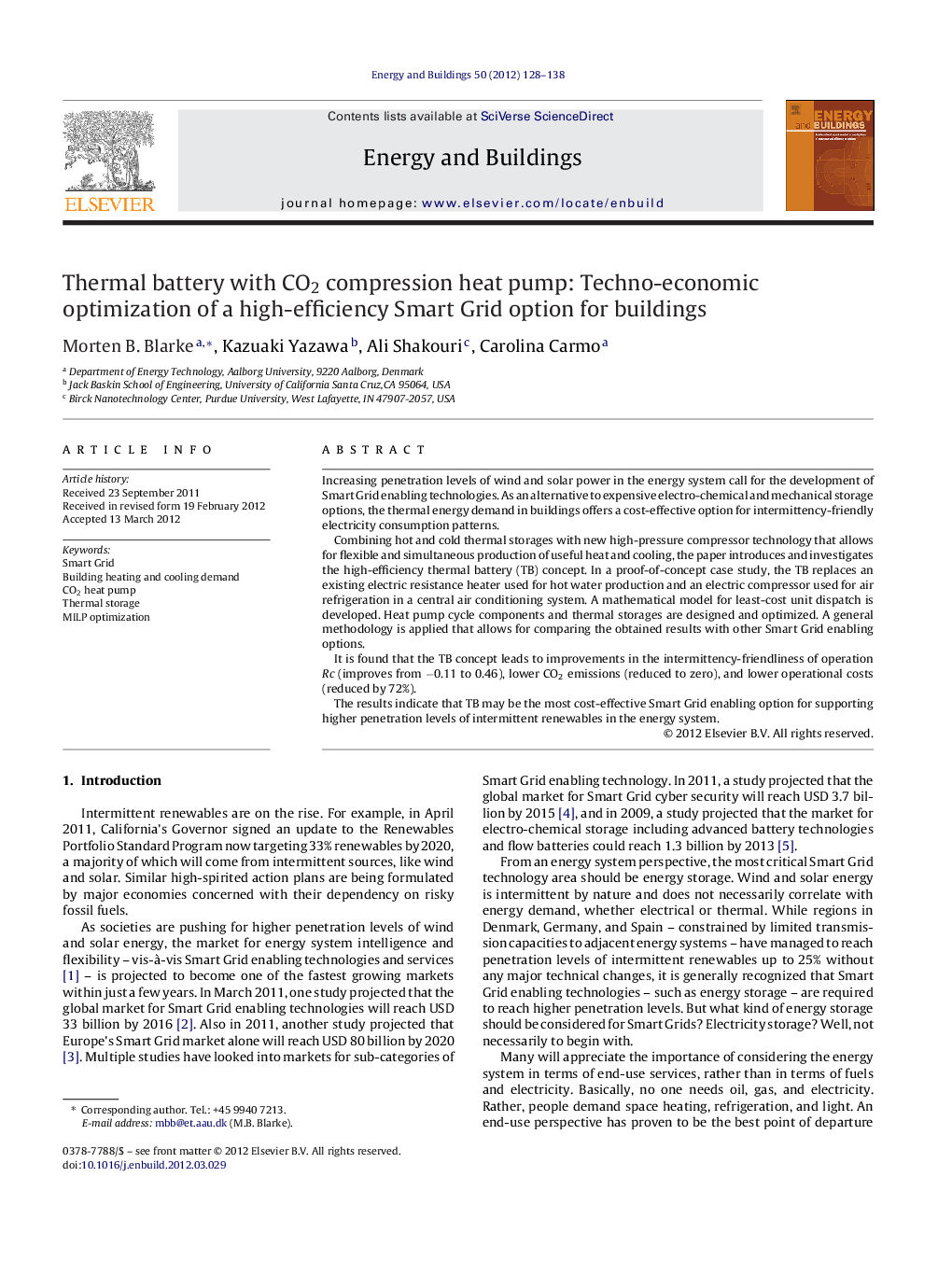| Article ID | Journal | Published Year | Pages | File Type |
|---|---|---|---|---|
| 263754 | Energy and Buildings | 2012 | 11 Pages |
Increasing penetration levels of wind and solar power in the energy system call for the development of Smart Grid enabling technologies. As an alternative to expensive electro-chemical and mechanical storage options, the thermal energy demand in buildings offers a cost-effective option for intermittency-friendly electricity consumption patterns.Combining hot and cold thermal storages with new high-pressure compressor technology that allows for flexible and simultaneous production of useful heat and cooling, the paper introduces and investigates the high-efficiency thermal battery (TB) concept. In a proof-of-concept case study, the TB replaces an existing electric resistance heater used for hot water production and an electric compressor used for air refrigeration in a central air conditioning system. A mathematical model for least-cost unit dispatch is developed. Heat pump cycle components and thermal storages are designed and optimized. A general methodology is applied that allows for comparing the obtained results with other Smart Grid enabling options.It is found that the TB concept leads to improvements in the intermittency-friendliness of operation Rc (improves from −0.11 to 0.46), lower CO2 emissions (reduced to zero), and lower operational costs (reduced by 72%).The results indicate that TB may be the most cost-effective Smart Grid enabling option for supporting higher penetration levels of intermittent renewables in the energy system.
► We present a Smart Grid enabling concept for integrated heating and cooling supply ► The thermal battery combines a CO2 heat pump with hot and cold thermal storages ► We develop a mathematical model for economic unit dispatch ► We implement and apply the model for a proof-of-concept case study ► Significant benefits are found for intermittency-friendliness, costs, and emissions.
